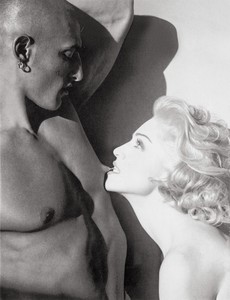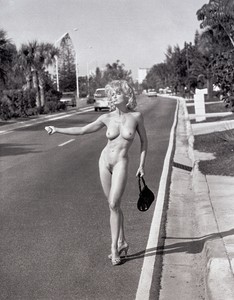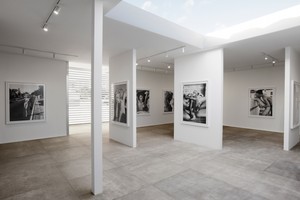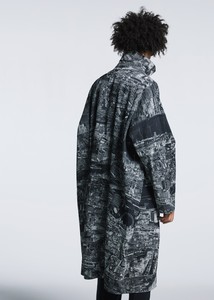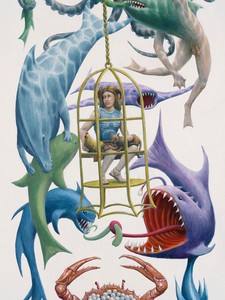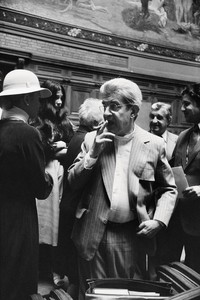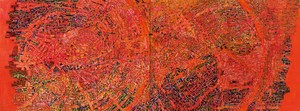A funny fact about Madonna, which I heard from a poorly translated interview read aloud by comedy duo French and Saunders, is that Sex, her 1992 photography book, was, in Hungary, retitled Slut. The book, like Madonna herself, has always courted misunderstanding.
Originally packaged in an opaque Mylar bag that read “ADULTS ONLY,” Sex sold 150,000 copies on its first day and spent weeks on the New York Times bestseller list. Despite the hype (most notably, and incorrectly, that the book showed Madonna having sex with a dog), Madonna and photographer Steven Meisel’s book trafficked less in shock than some hoped for. “If everyone yawned,” Madonna told an interview before publication, “I’d say hooray. That means something happened.” Critics who’d been titillated by the potential scandal scrambled for new ways to discredit the book. A New York Times review bemoaned the inclusion of queer sex—“some of us actually like the opposite sex,” it read, as if the vaults aren’t full to bursting with art depicting heterosexual fantasies.
What critics surely knew, but failed to outmaneuver, was that their mocking reactions only fortified Madonna’s position: a woman publicly scolded for owning her desires. Today she has become so accustomed to this combative stance that she has at times rebuffed even her advocates—Lady Gaga and Camille Paglia, for two—claiming to be the lone sexually empowered woman in a hostile industry, attacked on all sides. It’s a powerful (and highly marketable) position to claim, as well as an unfortunately limiting one. Sex, however, was Madonna’s most astute performance in this regard, her greatest middle-fingering.
What remains interesting about the photographs in Sex is not the sex—as far as erotica goes, the images are tame by today’s standards (nothing you can’t see in a David LaChapelle photograph or the opening credits of a Ryan Murphy series). Many depict sexual practices that were then considered highly subversive: homosexuality, bisexuality, S&M. The key word is “depict.” Madonna playfully teases the viewer—her mouth may come close to performing anilingus on a man, but her lips are clearly planted on the man’s inside cheek.
Despite her exhibitionism, Madonna was no poser. In 1989, she included an insert with her album Like a Prayer titled “The Facts about AIDS,” becoming one of the first high-profile figures to break media silence and use her platform to educate the public about the disease. In that light, Sex is a gift to those abandoned communities, to queer people who had for many years come to think of their sexual proclivities as dangerous and shameful. Those only capable of appraising the shock value (or lack of it) in the images failed to see the joy depicted in Sex. There is wry humor in the best photographs, like the famous shot of Madonna—full-platinum Marilyn hair, cigarette balanced on lip—naked and hailing a cab in the middle of an LA street (Carrie Bradshaw would never).
In another, Madonna stands on an apartment radiator, her back turned, facing out a window wearing black leather boots and a men’s white tank, one hand clasped around her bare buttocks, deliberately commingling binary roles—butch and femme, subject and voyeur, an exhibitionist with her back turned. These androgynies seem less daring today, until one remembers that there are people currently trying to ban queer books all over the country. In every image, Madonna still challenges the viewer to reverse all accepted power hierarchies—to acknowledge that, fully exposed, she retains her power.
To celebrate the thirtieth anniversary of this remarkable book, Saint Laurent presented a selection of Steven Meisel’s photographs from Sex at Art Basel Miami Beach, while Saint Laurent Rive Droite, alongside Callaway, New York, published a limited-edition reprint of the book of 800 copies. This reissue will be sold, with proceeds benefiting Madonna’s Raising Malawi charity, via an auction in the upcoming months.

